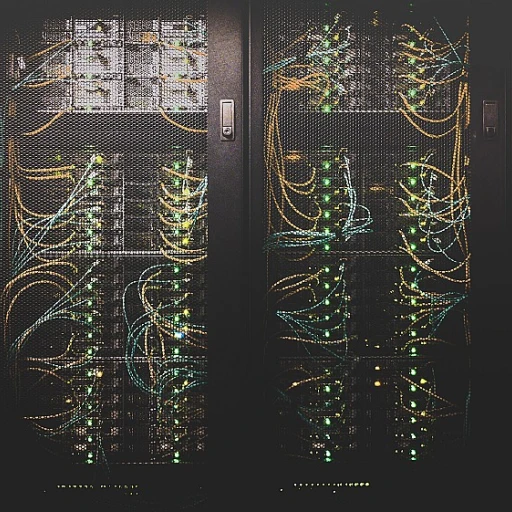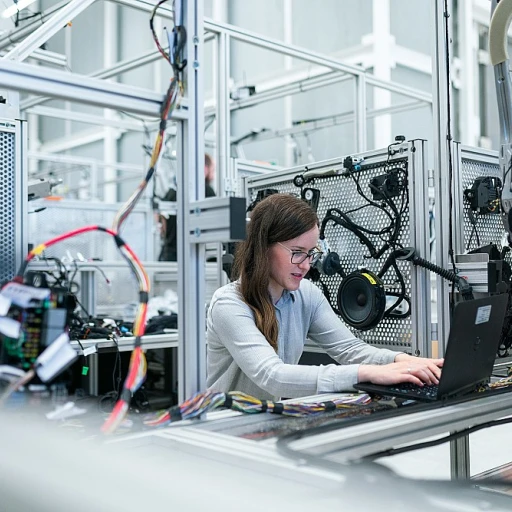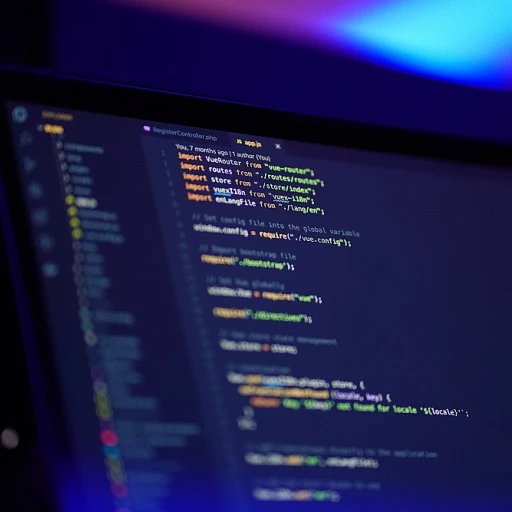
The Rise of Quantum Computing in Software Development
The Quantum Leap in Software Development
As we delve into the latest innovations in software technology this June, one cannot overlook the transformative potential of quantum computing. This emerging technology is poised to revolutionize the way companies approach problem solving, offering unprecedented computational power that could redefine the landscape of software development.
Quantum computing is not just a buzzword; it represents a fundamental shift in how we process data. Unlike classical computers, which use bits as the smallest unit of data, quantum computers use qubits. This allows them to perform complex calculations at speeds that were previously unimaginable. For businesses, this means tackling real problems in real time, from optimizing supply chains to enhancing cybersecurity measures.
Several tech giants are already investing heavily in quantum technologies. For instance, companies are exploring how quantum computing can be integrated with artificial intelligence and machine learning to create more efficient algorithms. This integration could lead to advancements in autonomous vehicles, virtual reality, and even gene editing.
Moreover, the impact of quantum computing extends beyond just technological advancements. It has the potential to influence the workforce, as employees will need to adapt to new tools and methodologies. This shift may also lead to job cuts in certain areas, while creating new opportunities in others.
As we continue to explore the future of software, it's clear that quantum computing will play a pivotal role. For those interested in a deeper dive into how companies are leveraging this technology, check out the insights on innovations at Harbin New Rich Technology Development Co. Ltd.
AI and Machine Learning: Shaping the Future of Software
AI and Machine Learning: Transforming Software Development
In the ever-evolving landscape of software technology, artificial intelligence (AI) and machine learning (ML) are at the forefront, driving significant changes across industries. As we delve into June's tech news, it's clear that these technologies are not just buzzwords but pivotal tools reshaping the future of software development.
AI and ML are enabling companies to tackle real problems with unprecedented efficiency. From autonomous vehicles to smart glasses, these technologies are enhancing problem-solving capabilities and providing innovative solutions. The integration of AI in software allows for real-time data analysis, improving decision-making processes and operational efficiency.
Moreover, AI and ML are playing a crucial role in cybersecurity. As cyber threats become more sophisticated, AI-based tools are essential for detecting and mitigating risks, ensuring the safety of sensitive data. This is particularly important as businesses increasingly rely on digital platforms and open source technologies.
The impact of AI and ML extends to the workforce as well. While there are concerns about job cuts, these technologies also create opportunities for employees to engage in more strategic roles, focusing on tasks that require human creativity and critical thinking. Companies are investing in upskilling their workforce to adapt to these changes, ensuring long-term sustainability.
In the realm of software development, AI and ML are streamlining processes through low-code platforms, which accelerate development cycles and reduce time-to-market. This is crucial for businesses aiming to stay competitive in a rapidly changing environment.
For more insights on how AI and machine learning are revolutionizing software development, check out our detailed analysis on innovations in rail management technology.
The Impact of Blockchain on Software Security
The Blockchain Revolution in Software Security
As we delve into the impact of blockchain on software security, it becomes evident that this technology is reshaping the landscape of cybersecurity. Blockchain, often associated with cryptocurrencies, offers a decentralized approach that enhances security protocols. This is particularly crucial in an era where data breaches and cyber threats are rampant.
Companies are increasingly adopting blockchain-based solutions to safeguard their systems. This technology provides a transparent and immutable ledger, which ensures that data remains secure and tamper-proof. The implications for software development are profound, as developers can leverage blockchain to create more secure applications.
Moreover, the integration of blockchain with other technologies like artificial intelligence and machine learning is opening new avenues for innovation. For instance, blockchain can enhance the security of AI models by providing a secure framework for data sharing and model training. This synergy is paving the way for more robust and reliable software solutions.
In the long term, blockchain's role in software security will likely expand, influencing various sectors from finance to healthcare. As businesses continue to explore the potential of blockchain, the demand for skilled professionals in this field is expected to grow, impacting the workforce dynamics in the tech industry.
For those interested in crafting innovative business ideas, understanding the potential of blockchain in software security is essential. This knowledge will allow companies to develop strategies that not only protect their assets but also drive growth and innovation. For more insights, you can explore this guide to concept development and planning.
The Role of Low-Code Platforms in Accelerating Development
Accelerating Development with Low-Code Platforms
In the fast-paced world of software technology, low-code platforms are emerging as a game-changer for companies looking to accelerate development processes. These platforms allow employees with minimal coding experience to create applications using visual interfaces and pre-built modules. This approach not only speeds up development but also empowers a broader section of the workforce to contribute to tech projects.
Low-code platforms are particularly beneficial for businesses aiming to stay competitive in an era where technologies like quantum computing and artificial intelligence are rapidly evolving. By reducing the reliance on traditional coding, these tools enable companies to focus on solving real problems and innovating in areas like machine learning and virtual reality.
Moreover, the integration of low-code platforms can lead to significant cost savings. With fewer specialized developers needed, companies can allocate resources more efficiently, potentially avoiding job cuts while still advancing their tech capabilities. This shift is crucial as businesses navigate the complexities of cybersecurity and data management in the digital age.
As we look towards the future, the role of low-code platforms will likely expand. They offer a sustainable approach to software development, aligning with the growing emphasis on green coding practices and renewable energy. By streamlining processes and reducing energy consumption, these platforms contribute to a more sustainable tech industry.
In June, the focus on low-code platforms continues to grow, with major players like Google investing in these technologies to enhance their development ecosystems. As the year progresses, we can expect to see more news and innovations in this space, further shaping the future of software development.
The Evolution of User Interfaces: From AR to Brain-Computer Interfaces
The Next Frontier in User Interfaces
The evolution of user interfaces is a fascinating journey that reflects the rapid pace of technological advancement. As we move further into 2023, the focus is shifting from traditional screens to more immersive and intuitive experiences. Augmented reality (AR) and virtual reality (VR) are no longer just buzzwords; they are becoming integral parts of our daily tech interactions. Companies are investing heavily in these technologies, recognizing their potential to transform how we interact with software.
Smart glasses and other wearable tech are leading the charge, offering users a seamless blend of the digital and physical worlds. This June, tech giants are unveiling new tools that will allow employees to engage with data in real time, enhancing problem-solving capabilities and boosting productivity. The integration of AR and VR into business environments is not just about flashy presentations; it's about creating more efficient workflows and improving the overall user experience.
Brain-Computer Interfaces: A Glimpse into the Future
While AR and VR are making waves, the concept of brain-computer interfaces (BCIs) is pushing the boundaries of what's possible. This technology, which allows direct communication between the brain and external devices, is still in its infancy but holds immense potential. Imagine controlling software with just your thoughts, a prospect that could revolutionize industries from healthcare to autonomous vehicles.
Companies are exploring BCIs as a long-term investment, understanding that while the tech is not yet mainstream, its implications for accessibility and user interaction are profound. As we continue to explore the future of software, the integration of such advanced interfaces will likely become a key area of focus, driving innovation and opening new avenues for development.
The journey from traditional user interfaces to these advanced technologies is not without its challenges. Cybersecurity remains a critical concern, as does the ethical use of such powerful tools. However, as with quantum computing and AI, the potential benefits of these innovations are too significant to ignore. As we look ahead, the evolution of user interfaces will undoubtedly play a pivotal role in shaping the future of software.
Sustainability in Software: Green Coding Practices
Embracing Green Coding Practices
As the tech industry continues to evolve, sustainability has become a crucial consideration in software development. Companies are increasingly aware of their environmental impact and are seeking ways to reduce their carbon footprint. This June, the focus on green coding practices is more relevant than ever, as businesses aim to align their operations with global sustainability goals.
Green coding involves optimizing software to consume less energy, which is particularly important given the rise of energy-intensive technologies like quantum computing and machine learning. By implementing efficient algorithms and reducing unnecessary computations, developers can significantly cut down on energy usage. This not only benefits the environment but also reduces operational costs for companies.
Tools and Technologies for Sustainable Development
Several tools and technologies are emerging to support sustainable software development. Open source platforms are playing a pivotal role, allowing developers to collaborate on energy-efficient solutions. Additionally, machine learning tools are being leveraged to analyze data and identify areas where energy consumption can be minimized.
Companies are also investing in renewable energy sources to power their data centers, further reducing their environmental impact. This shift towards sustainability is not just a trend but a long-term commitment that will shape the future of software development.
The Role of Employees and the Workforce
Employees are at the forefront of this green revolution. As businesses adopt sustainable practices, there is a growing demand for a workforce skilled in green coding techniques. Training programs and skill development initiatives are being implemented to equip employees with the necessary knowledge and tools to contribute to sustainable development.
Incorporating sustainability into software development is not without its challenges. However, with the right strategies and a commitment to innovation, companies can overcome these hurdles and pave the way for a more sustainable future in the tech industry.





-large-teaser.webp)









